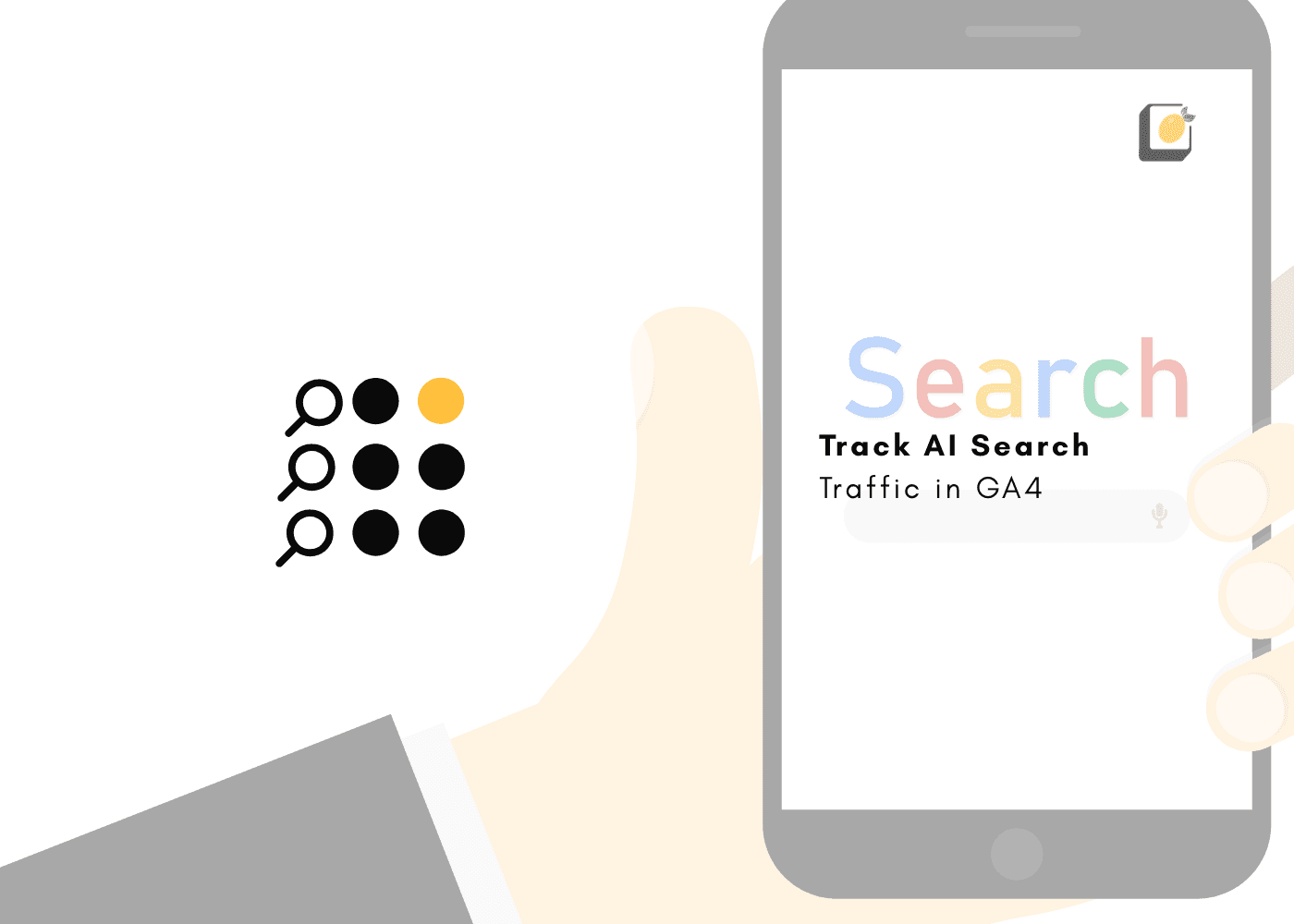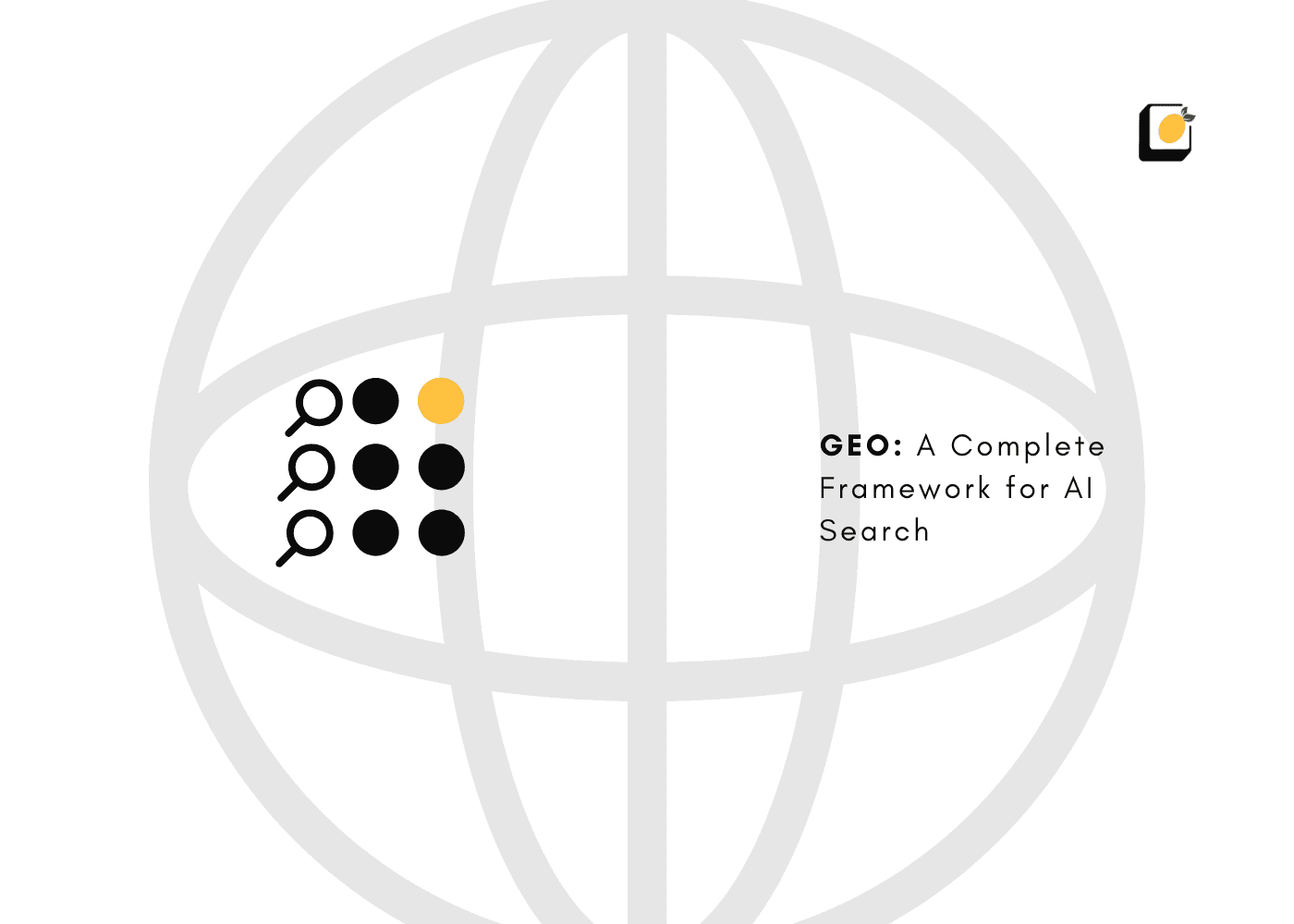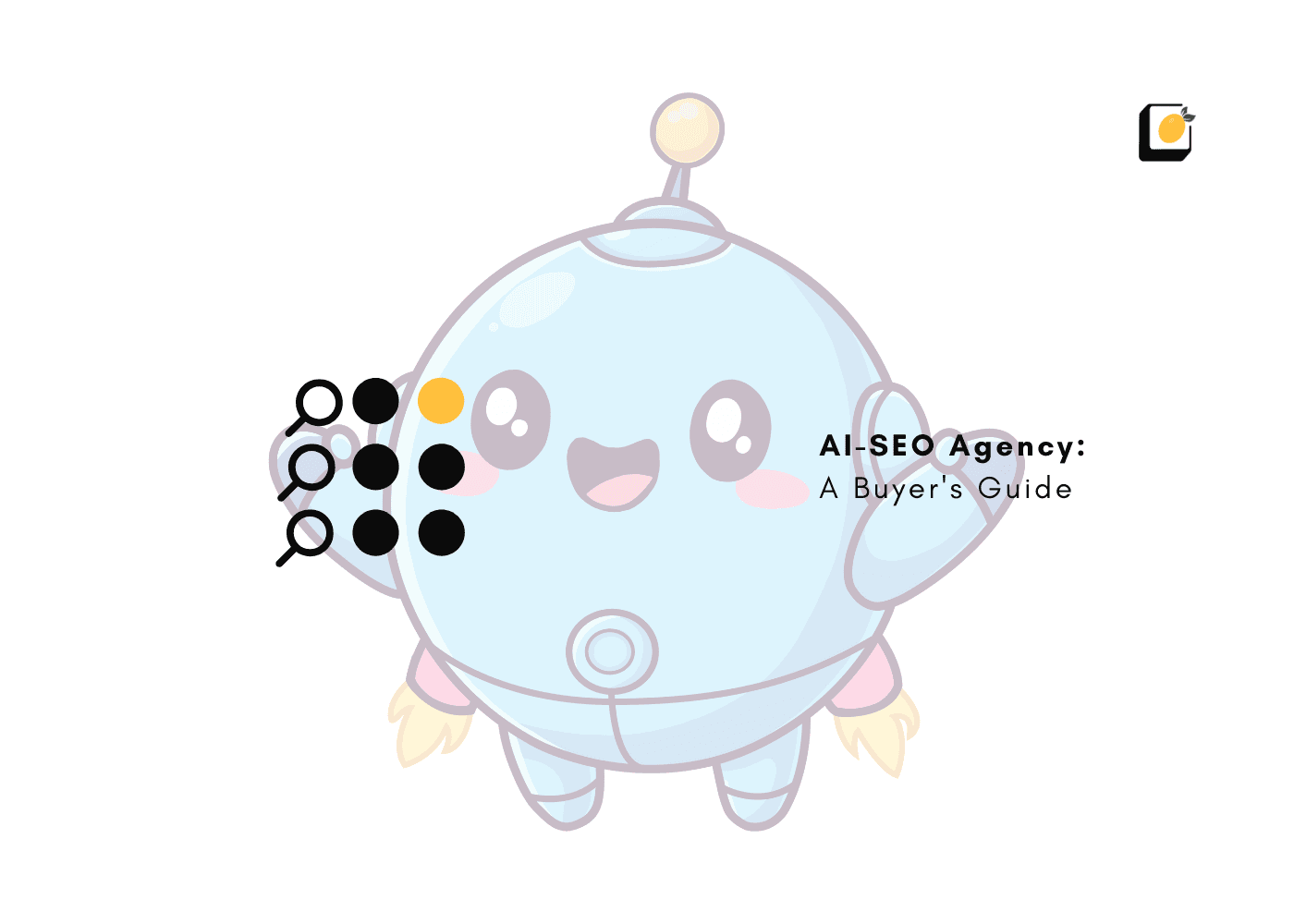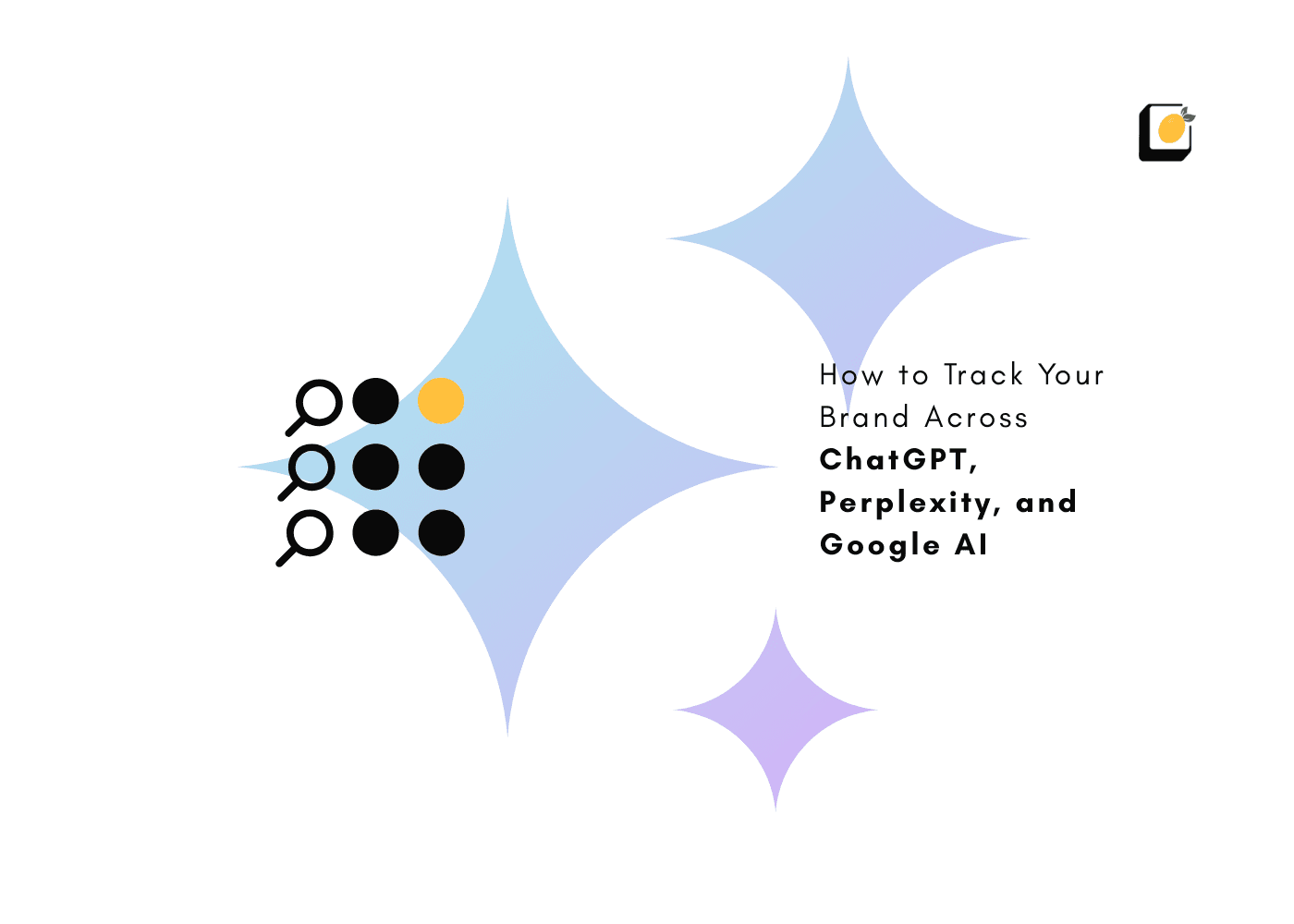The 4 Pillars of SEO: Boost the Success of Your SEO Strategy
July 1, 2025
Join 500+ brands growing with Passionfruit!
If your SEO isn’t compounding, it’s not working.
In 2025, SEO has evolved. With generative AI reshaping how buyers search, the fundamentals have become more interconnected, more strategic, and more outcome-driven. The brands still winning have stopped treating SEO like isolated checklists and started engineering it like a scalable system.
Most underperforming SEO strategies today have the same root cause: fragmentation. A high-speed site won’t save weak content. Backlinks won’t fix misaligned intent. And publishing weekly won’t matter if Google can’t crawl it.
That’s why this guide goes deep on what actually moves the needle.
In this guide, you’ll learn:
What the four core pillars of SEO are, and why skipping any one of them kills ROI,
How CMOs and growth teams are evolving their strategies for both traditional and AI-powered search,
Actionable ways to align your SEO execution with compounding business impact.
By the end, you’ll know exactly how to assess, optimize, and future-proof your SEO with a framework that scales.
Explore how Passionfruit builds SEO systems that drive traffic, trust, and pipeline! Talk to a Growth Expert today!
The Strategic Role of SEO in Growth Marketing Today
SEO today is about total growth alignment.
For modern CMOs and growth leads, SEO has become one of the few channels that works across every stage of the funnel:
At the top of the funnel (TOFU), SEO drives awareness by answering real questions prospects are already asking. The typology of questions includes “how to,” “what is,” and comparison content.
In the middle (MOFU), SEO builds trust and consideration through solution guides, reviews, use cases, and branded narratives.
And at the bottom (BOFU), it drives action by ranking for high-intent searches like “[product] pricing,” “[brand] vs [competitor],” or “best [category] tools for [persona].”
Unlike paid channels, SEO doesn’t reset when your budget does. It's an always-on, compounding asset. While SEM gives you visibility as long as you're paying for clicks, SEO builds momentum with each piece of content and every crawlable improvement. Done right, it becomes the lowest-CAC, highest-leverage growth engine in your stack.
That’s where the four pillars of SEO come in. They offer a strategic, scalable framework. One that’s now essential for brands operating in AI-powered search environments. Whether you run an in-house team or work with agency partners, these pillars are how you build a system that performs.
Curious how your current SEO effort maps across these pillars? Run a Passionfruit SEO Audit.
The 4 Pillars of SEO: A CMO-Grade Breakdown

If you want SEO that drives the actual pipeline, these four pillars are the non-negotiable foundations of sustainable, AI-visible, business-aligned search performance in 2025. Let’s break them down.
1. Technical SEO
Think of technical SEO as the infrastructure your entire strategy rests on. If it’s not sound, nothing else scales. In today’s ecosystem, speed and structure matter more than ever. Sites that load in under 2.5 seconds pass Core Web Vitals, and deliver seamless mobile-first experiences consistently outperform the rest. But it’s not just about pleasing Google anymore.
AI-readiness is now part of the equation. Models like ChatGPT, Gemini, and Claude rely on clean architecture, structured data, and crawlable context to surface your content in generative answers. Schema markup, crawl depth, indexability, and site architecture are all critical to how these systems “understand” your brand.
2. On-Page SEO
This is where your content meets your users. On-page SEO is now about clarity, conversion, and alignment with intent. Pages should be designed to serve the buyer first with meta titles that earn clicks, headers that provide structure, and layouts that guide users from problem to solution fast.
Internal linking helps both users and search engines navigate your ecosystem, while pillar-cluster frameworks build topical depth. With AI summarizing pages rather than listing them, your SEO copy needs to be not only readable, but structurally compatible with AI interfaces. Think of tables, bullet points, clear hierarchies, and embedded trust cues.
3. Content Strategy
A pillar that’s often misunderstood or skipped. Your SEO is only as powerful as the content strategy it’s built on. Start with a keyword hierarchy or core terms for category dominance, supporting queries for depth, and long-tail phrases for niche authority.
But volume alone won’t win. You need to map content to actual user jobs-to-be-done and buyer journey stages. Freshness matters too. Publishing consistently signals that your brand is active and evolving. The biggest unlock? Treat search intent as your compass. In 2025, success isn’t about who targets a keyword. It’s about who best answers the need behind it.
4. Off-Page SEO
This is your reputation layer, and in an AI-first world, it matters more than ever. While backlinks still count, modern off-page SEO also includes brand citations, unlinked mentions, and how often authoritative sources talk about you.
These trust signals tell both humans and machines that your content is credible and worth surfacing. Even AI models are now referencing brands without traditional backlinks. Add to that social proof, thought leadership, and influencer association, and you’ve got an off-page footprint that fuels discoverability far beyond Google.
How the 4 Pillars Work Together (And What Happens If They Don’t)

Great SEO isn’t built in silos. It’s built on systems.
In high-performing teams, the four pillars namely technical, on-page, content, and off-page don’t operate as separate checklists. They function as a single, compounding engine that accelerates trust, discoverability, and pipeline velocity. The power is in how they reinforce one another.
When Alignment Fuels Growth
Each pillar supports and amplifies the others:
Technical strength ensures that every content and UX investment is actually seen.
On-page decisions are only effective if informed by clear structure and fast delivery.
Great content performs best when published on technically sound, intent-mapped infrastructure.
Off-page authority gains exponential lift when the content it supports is built to convert and rank.
When these parts operate in sync, you scale predictably.
When One Pillar Lags, Performance Bottlenecks
Misalignment across these pillars is one of the most common causes of stalled SEO ROI. You might see:
Traffic without conversions → Often a symptom of content and intent misalignment.
Ranking volatility → A red flag for technical debt or low domain trust.
Great content that never surfaces → Usually a crawlability or off-page authority issue.
Worse, when each pillar is owned by a different agency or internal team without shared KPIs, the result is a sprawl. And sprawl slows down velocity.
What Cohesion Unlocks
When all four pillars are unified under a single strategy:
Teams move faster without guesswork.
Dashboards become predictive, not reactive.
Organic visibility becomes sustainable, not dependent on paid backfill.
This is how market leaders build durable growth machines.
AI & GEO’s Role in All Four Pillars
SEO in 2025 isn’t just about Google. It’s about being seen and cited by AI.
Large Language Models like ChatGPT, Gemini, and Claude scan SERPs and generate answers. That means your SEO strategy can’t stop at traditional rankings. It must evolve to include Generative Engine Optimization (GEO), the practice of making your content AI-readable, retrievable, and reference-worthy.
Every Pillar Needs to Be GEO-Ready
Technical SEO needs structure beyond crawlability. Schema, clean layouts, and clear semantic markup now power how AI models understand and retrieve your pages.
On-Page SEO must prioritize not just skimmability for humans, but clarity for machines. Pay attention to logical headings, concise answers, and high-quality formatting.
Content Strategy has to map to real user intent, but also anticipate how AI paraphrases, summarizes, and chooses sources to cite.
Off-Page SEO is no longer just about backlinks. AI models also factor in unlinked brand mentions, citations in structured data, and topical authority from thought leadership.
GEO is a Visibility Multiplier
GEO bridges traditional SEO and AI-powered discovery. It ensures your content is not just rankable, but also retrievable in zero-click environments, featured in AI responses, and trusted as a source of truth.
If your SEO team isn’t building with GEO principles across all four pillars, you’re building content for a past version of the internet.
Want to see how AI models interpret your brand today? Read our GEO Optimization Guide here!
Where Each SEO Pillar Drives ROI
Not all SEO activities pay off the same way, or on the same timeline. Each of the four pillars delivers ROI differently, depending on where you are in your growth cycle and what you're optimizing for.
Trying to drive short-term performance? or compound long-term visibility? The key is understanding where each pillar shines.
Here's a breakdown of when and where each pillar moves the needle, and how to recognize the returns.
Pillar | Primary Use Case | Where It Pays Off | ROI Signals |
Technical SEO | Site rebuilds, product launches, indexation issues | Improves crawlability, speed, and visibility in both search and generative AI engines | - Faster indexing- Higher Core Web Vitals scores- Reduced dev/SEO inefficiencies |
On-Page SEO | Optimizing landing pages, reducing bounce, increasing conversions | Aligns structure + content with user intent, boosting rankings and engagement | - Higher CTRs- Lower bounce rate- Improved conversion from organic |
Content Strategy | Building authority, capturing demand, full-funnel engagement | Compounds over time via scalable, intent-mapped content | - Steady traffic growth- Lower CAC- Better alignment between SEO + paid performance |
Off-Page SEO | Gaining trust, breaking into competitive SERPs, AI recognition | Earns external validation that amplifies rankings and generative citations | - Stronger domain authority- More AI citations (ChatGPT, Gemini, Claude)- Faster sales cycles |
Want to audit which pillar needs reinforcement? Talk to a Passionfruit Growth Expert today!
Common SEO Failures (And Which Pillar’s Missing)

If your SEO performance is stalling, it’s rarely a mystery. It’s usually a missing or misfiring pillar. Here’s how to diagnose the symptoms fast and fix what’s actually broken.
Not ranking on Google or AI engines?
You’re likely dealing with a technical SEO or content strategy problem. If your site isn't being crawled properly, or if the content isn't structured to match search intent, neither search engines nor AI models will surface it. It could be a slow site, thin content, or missing schema.Traffic, but no engagement? High bounce rates?
That’s usually an on-page SEO issue. Your content might be relevant, but if the layout, CTAs, or information hierarchy don’t align with how your audience thinks and searches, they’ll drop off before converting.No one linking to your content? No citations in AI answers?
You have a weak off-page SEO strategy. If your content isn’t earning backlinks, mentions, or citations, you’re invisible to both traditional search engines and AI ranking models. Authority has to be built over time and with intention.Ranking well but not converting?
It’s a content strategy misfire. You may have traffic, but if it’s not aligned to your user journey, you won’t move the needle. Your content might attract attention, but it’s not leading prospects toward action.
Pro Tip: Before you overhaul your entire SEO program, identify which pillar is underperforming. Often, it’s not everything. It’s just one piece that’s breaking the system.
How Passionfruit Builds Pillar-Based SEO Systems
At Passionfruit, we build unified systems that scale visibility, trust, and pipeline across every search engine and AI interface.
Every campaign we run is built on the four pillars and engineered to work together from day one:
GEO-ready content that ranks on Google and gets cited by AI models like ChatGPT, Claude, and Gemini
Technical optimization to ensure your site is fast, crawlable, and structured for AI-readability
Internal linking and topical clusters that build depth, clarity, and compounding authority
Off-page assets that boost credibility through backlinks, mentions, and brand signals
We also provide live, unified dashboards, so you can track how SEO drives awareness, engagement, and qualified pipeline in one view.
Book a Strategy Call with Passionfruit today!
Key Takeaways
SEO isn't dead. It just needs a smarter, system-based approach.
The four pillars must work together to drive real ROI.
Fragmented SEO kills compounding growth.
AI engines now cite structured, authoritative content.
GEO is the missing layer connecting SEO to AI visibility.
FAQs
Q1. What are the four pillars of SEO?
The four pillars are Technical SEO, On-Page SEO, Content Strategy, and Off-Page SEO. Each plays a vital role. Technical ensures crawlability, on-page guides usability and intent alignment, content fuels discovery, and off-page builds trust and authority.
Q2. Which pillar should I start with?
Start with Technical SEO. If your site isn’t crawlable, indexable, or fast, nothing else will matter. It’s the foundation that ensures your content can be found and trusted by both search engines and AI models.
Q3. How do I know if my SEO is working?
Look at organic traffic growth, conversion rates, keyword rankings, and new in 2025, AI citations. If you're being surfaced in tools like ChatGPT or Gemini and turning traffic into leads, you're on the right track.
Q4. What is GEO in SEO?
GEO (Generative Engine Optimization) is the practice of structuring your content for AI discoverability. It ensures that LLMs like ChatGPT, Gemini, and Claude can retrieve, cite, and trust your content as a reliable source.
Q5. Can Passionfruit help with all four pillars?
Absolutely. Passionfruit builds unified SEO systems, not siloed services. We optimize across all four pillars with GEO-ready content, technical infrastructure, conversion-optimized UX, and trust-building off-page strategies.















